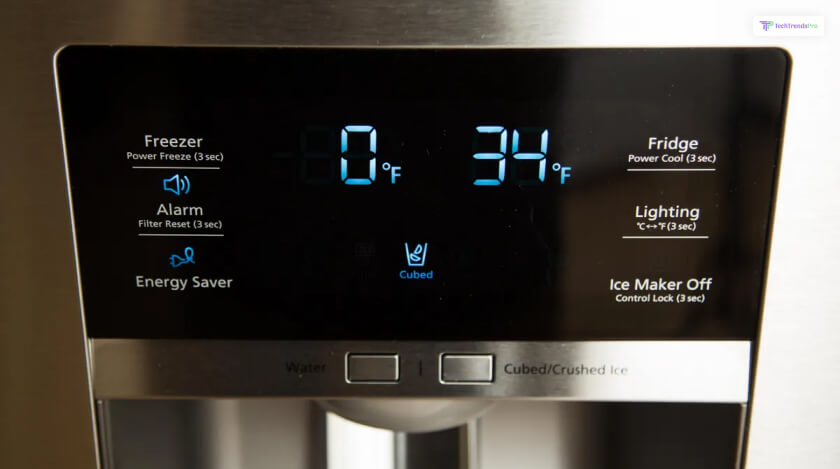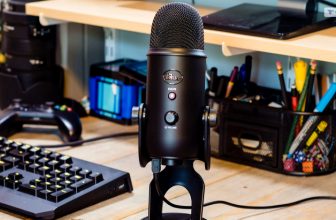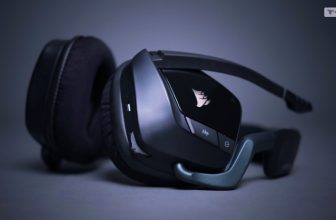
Do you have an ice dispenser from Samsung? And is your Samsung ice maker not working? Although Samsung appliances have a solid reputation and are widely trusted, they occasionally experience problems like any other appliance.
Your ice dispenser may not actually have a serious issue; occasionally, only little obstructions can give the impression that your ice maker is malfunctioning. If the ice maker isn’t operating, it can be because of ice buildup, a broken water inlet valve, low water pressure, a degraded water filter, or an auger motor that’s broken.
Keep reading this article till the end to learn more bout this issue and how you can fix it…
Samsung Ice Maker Not Working: Here Are The Possible Reasons!
A number of things can stop an ice maker from working. Low water pressure or an ineffective water filter may be to blame if the ice maker doesn’t seem to be producing any or enough ice. It could be as easy as a filthy water filter, low water pressure, or heavy mineral deposits in your water if your ice maker produces little, hazy, or clumped ice. If your ice bucket freezes, you might need to troubleshoot it and get it serviced.
Here are some of the reasons why your Samsung ice maker is not working properly:
1. Defective Water Inlet
The water supply line and the water inlet valve are connected to supply water to the ice maker. Water intake valve will open when the ice maker needs water.
The water inlet valve may eventually develop mineral buildup that makes it difficult to open, or it may experience electrical failure. Also, the water intake valve must be replaced if either problem arises.
You can access the water inlet valve depending on your Samsung refrigerator model. To find the valve, the refrigerator’s rear access panel must typically be removed from the back of the appliance.
2. Ice Blockage Or Buildup
Ice buildup or an ice blockage is one of the most frequent causes of an ice maker in a Samsung to cease working. Also, ice typically accumulates in the dispenser tube or ice machine tray.
The ice will need to be defrosted in order to fix the ice-building problem. You may probably use the auto-defrost feature on your model to defrost the ice maker or the entire refrigerator if necessary, if it has one.
Depending on how much ice has accumulated in the ice maker tray or bucket, you may need to defrost the entire refrigerator, remove the ice maker parts so they can thaw, or use a hairdryer to deliver mild heat to the frozen part.
3. Expired Water Filter
Samsung advises changing the water filter in your refrigerator once every six months. The presence of murky water or ice is a clear sign that the water filter needs to be replaced. The ice maker may not function properly if the water filter is old and clogged.
The water filters’ location depends on the refrigerator type you have. Once you’ve found the filter, you can twist it off and add a new one.
4. Bad Water Pressure
According to Samsung, the ice maker needs a water pressure of 20 psi to operate properly. The water pressure is likely too low if the ice maker has been producing little or broken ice cubes.
The water supply line is connected near the water inlet valve at the back of the refrigerator. Disconnect the refrigerator’s power and shut off the water before gaining access to the waterline. You may turn on the water by holding the water line over a bucket. If water is dribbling out, there is a problem.
However, if there is a strong, continuous flow of water, the issue is probably not with the water pressure. To more precisely ascertain whether the water pressure is at least 20 psi, test the water pressure with a gauge.
5. Failed Motor
The auger on the ice maker is in charge of churning and ejecting ice from the ice maker. The ice maker won’t function if the auger’s engine breaks out. The motor is probably failing or has failed if the ice maker has been producing a lot of noise but is not distributing ice.
You might be able to take the icemaker bucket out and manually turn the auger, depending on the model. The auger should be examined with a multimeter for continuity to detect if it has failed and if you can crank it with little resistance. Because removing the motor can be challenging, a qualified technician is preferable to handle this task.
How To Fix Your Samsung Ice Maker?
As I have already told you, a malfunctioning ice maker may have a number of issues. These include faulty motors, ice obstructions, filthy filters, over-cooled or overheated temperature cycles, improper connections, etc.
Here are some of the things that you can do if you want to fix your Samsung ice maker:
1. Check Water Inlet
The Samsung ice makers typically operate by automatically opening the intake valve and allowing water to enter the unit whenever ice is needed. Minerals that move through the water and are captured by the filter or valve may eventually clog that valve. It should go without saying that your ice maker won’t dispense ice and will cause ice buildups in the dispensing canal if there isn’t an adequate water flow.
Locate and delink your inlet valve, then examine it for obstructions or mineral buildup. If you discover any, wipe it out with a brush or other tool before reinserting it. If the dispenser operates, you can relax and breathe a sigh of relief.
2. Check For Ice Blockage Or Buildup
Like any dispensing device, it won’t function correctly if it doesn’t receive an adequate supply of the substance being dispensed. With ice makers, this is a common problem that can arise, and a blockage or buildup is most likely to blame. If you observe any obvious build-up or distorted ice that is obstructing the dispenser, remove the deformed and clogged ice and try running the dispenser again. If it functions properly this time, your problem is resolved.
3. Defrost The Bucket
You may have more serious obstructions or ice buildup in the refrigerator’s ice canal if you’ve recently tried the procedure above and cleaned the bucket of any damaged ice. However, your machine is still not distributing ice properly or at all. You can first see if the issue is resolved by defrosting the bucket or the machine itself. If it doesn’t, try completely defrosting the fridge and leaving it for a little while so that all the ice can melt and clear the dispensers.
You can use the defrosting feature that is often integrated into Samsung refrigerators and ice makers. If not, you should probably ask your mother for defrosting advice. However, you don’t need to disturb your mother; simply leave the refrigerator unattended, and the ice maker will dissolve quickly.
4. Check Water Pressure
According to the Samsung manual, the ideal water pressure for the ice maker is 20 psi. Find your water inlet and check the water pressure there. If you see that it is producing very little or no pressure at all, you should call a plumber to inspect your plumbing or simply connect the valve to a higher-pressure inlet. Although it will make ice, low water pressure frequently results in clumpy or sluggish ice.
5. Check The Motor
You can only manually inspect it due to the task’s increased difficulty; do not attempt to open it. The ice cubes are transported to the refrigerator’s dispensing mouth by the motor, which is coupled to a coiled auger.
You should be able to see the auger if you take the ice bucket out of the fridge. If it spins easily when you turn it by hand, use a multimeter to check its continuity. After properly pronging the motor, the motor is blown if the multimeter doesn’t beep.
6. Check That Your Ice Maker Is Switched On
The ice maker icon on the majority of models will illuminate when it is turned off. Change it so that it is not illuminated for ice production. Consult your user manual if you’re unsure how to proceed.
7. Power Cycle Your Ice Maker
For two minutes, unplug the refrigerator or turn it off at the circuit breaker before turning it back on.
The refrigerator can show an error code as it starts up. If so, use our error code guide to carry out the troubleshooting that is particular to that problem code (which may quickly indicate that service is required without any more troubleshooting).
8. Give The Ice Maker Some Time
Ice production ought to start within 8 hours of completing the previous processes. For ice production to resume at regular rates (about 2 trays of ice every 3 hours), it could take up to 24 hours.
During this time, make sure you occasionally dispense ice. The ice maker will stop producing ice if there is a buildup of ice at one end of the bucket, thinking it is full. Then go back and pick “Ice maker is making some ice but not enough” for further information on why distributing ice aids in ice production.
Best Alternatives to Samsung Ice Maker
Samsung Ice Maker is a feature that allows you to produce and store ice cubes in your Samsung refrigerator. It is a convenient and easy way to enjoy cold drinks and beverages. However, Samsung Ice Maker is not the only option available in the market. There are many alternatives and competitors that offer similar or better functionality, compatibility, and affordability. Here are some of the best alternatives and competitors for Samsung Ice Maker that you can consider:
GE Profile Opal Nugget Ice Maker
This is a countertop ice maker that produces soft and chewable nugget ice, also known as pellet or Sonic ice. It is a portable and compact device that can produce up to 24 pounds of ice per day and store up to 3 pounds of ice at a time. It also has a water reservoir that can hold up to 2.5 quarts of water and a Bluetooth feature that allows you to schedule and monitor your ice production from your smartphone. The GE Profile Opal Nugget Ice Maker is compatible with most standard outlets and costs $549
Frigidaire EFIC108-SILVER Ice Maker
This is another countertop ice maker that produces bullet-shaped ice cubes in two sizes: small and large. It is a fast and efficient device that can produce up to 26 pounds of ice per day and store up to 1.5 pounds of ice at a time. It also has a water reservoir that can hold up to 2.3 quarts of water and an LED indicator that alerts you when the ice basket is full or the water level is low. The Frigidaire EFIC108-SILVER Ice Maker is compatible with most standard outlets and costs $119.99
LG LRFDC2406S French-door Refrigerator
This is a refrigerator that features a dual ice maker that produces both cubed and crushed ice, as well as spherical craft ice. The craft ice is ideal for cocktails and beverages, as it melts slowly and preserves the flavor and quality of your drinks. The refrigerator also has a spacious and flexible interior that can accommodate large and irregular items, as well as a smart cooling system that maintains optimal temperature and humidity levels. The LG LRFDC2406S French-door Refrigerator is compatible with most standard outlets and costs $4,199.99
Bosch 800 Series French-door Refrigerator
This is another refrigerator that features a dual ice maker that produces both cubed and crushed ice, as well as pyramid-shaped ice. The pyramid ice is also great for cocktails and beverages, as it has a large surface area and a slow melting rate. The refrigerator also has a sleek and modern design that integrates seamlessly with your kitchen, as well as a water filter that reduces impurities and odors. The Bosch 800 Series French-door Refrigerator is compatible with most standard outlets and costs $3,329.
NewAir Countertop Clear Ice Maker
This is a countertop ice maker that produces clear ice cubes that are restaurant-quality and crystal-clear. Clear ice cubes are preferred by many people, as they have no impurities, bubbles, or odors, and they melt slowly and evenly. The ice maker can produce up to 40 pounds of ice per day and store up to 2.2 pounds of ice at a time. It also has a self-cleaning function that makes maintenance easy and convenient. The NewAir Countertop Clear Ice Maker is compatible with most standard outlets and costs $239.99.
Wrapping It Up!
Before calling a handyman or professional, ensure you’ve attempted all the aforementioned methods because it can be a straightforward filter blockage or water issue. Or perhaps you simply unintentionally disabled the ice option. You can congratulate yourself and reward yourself for a job well done if one of the approaches works.
If you were searching for the answer to why your Samsung ice maker was not working, I hope that this article has been of help to you. If there are any other queries related to the same, feel free to let me know. All you need to do is scroll down until you reach the page’s bottom. Then leave your comments and queries in the box below. And I will be there to answer them all for you!
Read Also:






